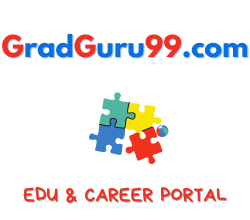This article serves as a comprehensive guide for beginners to embark on their journey of learning Database Management Systems (DBMS). It outlines a step-by-step approach, introduces key concepts, explores common tools and software, and delves into the benefits of mastering DBMS.
Learning DBMS as a Beginner – A Guide
In today’s data-driven world, the ability to effectively store, organize, and manipulate information is crucial. Database Management Systems (DBMS) play a pivotal role in achieving this goal.
A DBMS is a software application that facilitates the creation, access, and management of structured data in a centralized location.
Definitions of some important terms:
Let’s find out some important terms related to DBMS and see what these mean actually.
- Database: An organized collection of interrelated data.
- DBMS: A software application used to create, manage, and interact with databases.
- SQL (Structured Query Language): A standardized language used to interact with relational databases.
- Schema: The overall structure of a database, defining tables, columns, and their relationships.
- Table: A fundamental unit of organization in a relational database, storing data in rows (records) and columns (attributes).
Examples of some common Database:
- A library cataloging book titles, authors, and publication details is an example of a database.
- An e-commerce platform utilizing a DBMS to store customer information, product details, and order history.
Tools and Software related to DBMS work:
Several free and open-source DBMS options are available for beginners to experiment and practice. Here’s a table outlining some popular choices:
| DBMS | Description |
|---|---|
| MySQL | A widely used open-source relational DBMS. |
| PostgreSQL | A powerful open-source object-relational DBMS. |
| SQLite | A lightweight, embedded relational DBMS. |
| Microsoft SQL Server | A commercial relational DBMS from Microsoft. |
| Oracle Database | A high-performance, enterprise-grade relational DBMS. |
5 Primary Vendors of DBMS
- MySQL (Oracle Corporation)
- PostgreSQL (PostgreSQL Global Development Group)
- SQLite Consortium
- Microsoft (Microsoft SQL Server)
- Oracle Corporation (Oracle Database)
Languages and Software:
While SQL is the most common language for interacting with relational databases, other languages like PL/SQL (Procedural Language/Structured Query Language) and T-SQL (Transact-SQL) are used for specific DBMS platforms.
Benefits of Learning DBMS:
- Increased Efficiency: Organize and manage large amounts of data effectively.
- Improved Data Accuracy: Reduce redundancy and maintain consistent data.
- Enhanced Data Security: Implement strong security measures to protect sensitive information.
- Advanced Analytics: Facilitate data analysis and reporting from various perspectives.
- Career Opportunities: Gain valuable skills sought after in various industries.
Milestone Charter:
This table outlines a sample milestone charter for learning DBMS as a beginner:
| Milestone | Description | Target Completion Time |
|---|---|---|
| 1 | Understand the basics of databases and DBMS | 1 Week |
| 2 | Install and configure a free DBMS (e.g., MySQL) | 2 Weeks |
| 3 | Learn fundamental SQL commands (SELECT, INSERT, UPDATE, DELETE) | 4 Weeks |
| 4 | Create and manage simple databases with multiple tables and relationships | 6 Weeks |
| 5 | Explore data manipulation and retrieval using advanced SQL concepts (WHERE, JOIN, GROUP BY) | 8 Weeks |
References:
- W3Schools SQL Tutorial: https://www.w3schools.com/sql/
- MySQL Documentation: https://dev.mysql.com/doc/
- PostgreSQL Tutorial: https://www.postgresqltutorial.com/
Additional Tips:
- Start with online tutorials and interactive courses.
- Practice regularly with sample databases and exercises.
- Join online communities and forums to learn from experienced users.
- Consider pursuing industry-recognized certifications for career advancement.
Expert Level Concept to gain on (once beginner steps are done)
- Normalization: A process of organizing database tables to minimize redundancy and improve data integrity.
- Entity-Relationship Model (ERM): A visual representation of entities (data objects) and their relationships within a database.
- Database Security: Implementing safeguards to protect data confidentiality, integrity, and availability.
Conclusion:
DBMS proficiency is a valuable asset for IT professionals and individuals across various domains. By following the step-by-step guide presented here, utilizing the recommended tools and software, and delving deeper into advanced concepts, beginners can confidently embark on their DBMS learning journey.
